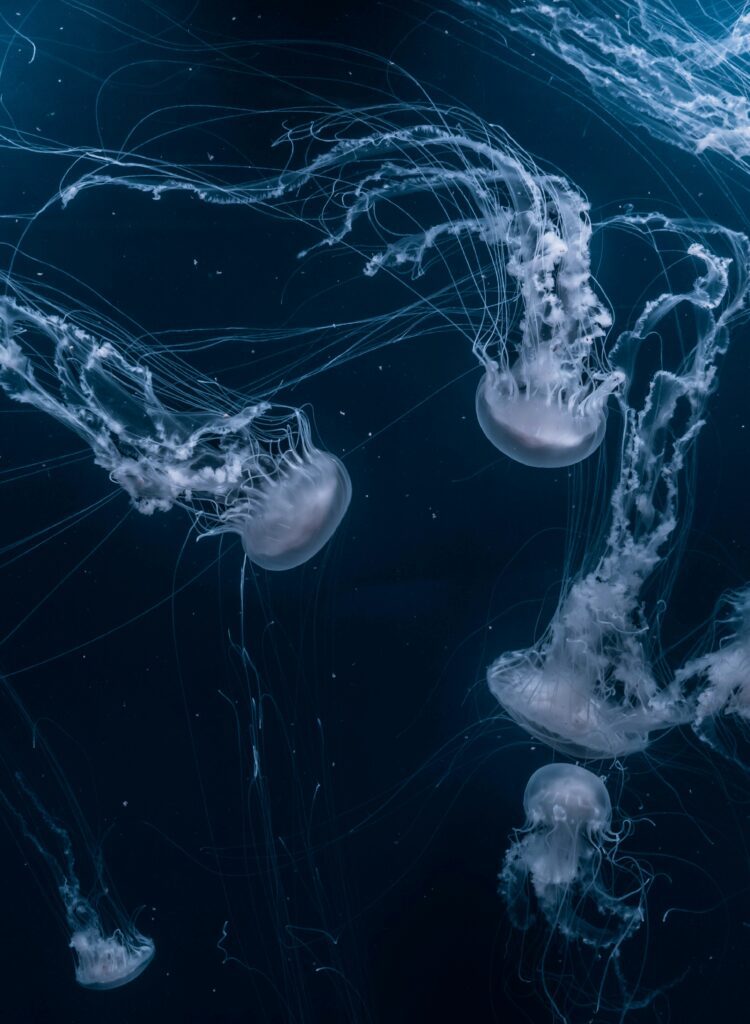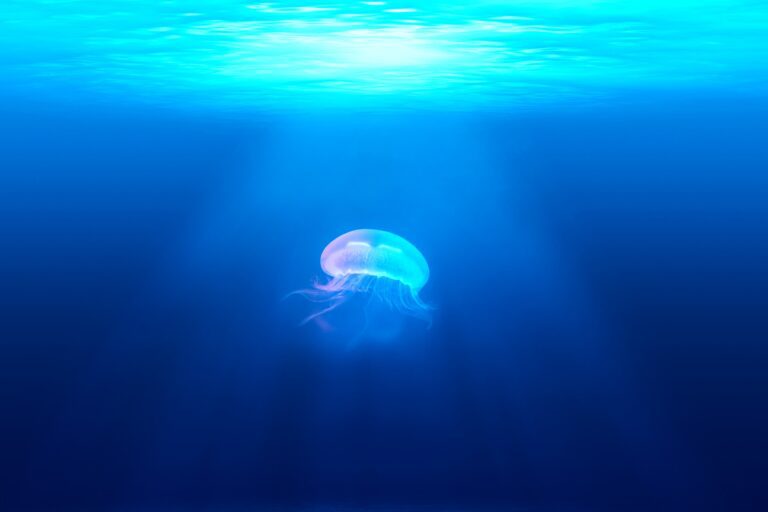The vastness of the ocean holds mysteries beyond our imagination, including a myriad of strange and unusual creatures that inhabit its depths. From bizarre adaptations to peculiar behaviors, the world beneath the waves is a treasure trove of oddities waiting to be explored. In this article, we delve into the fascinating realm of marine life, uncovering some of the most peculiar inhabitants of the ocean.
Anglerfish: Masters of Camouflage
Anglerfish are fascinating creatures that inhabit the depths of the ocean, known for their unique hunting technique and incredible adaptability to the extreme conditions of the deep sea. These mysterious fish have evolved to become masters of camouflage, employing various strategies to blend seamlessly into their dark surroundings.
Adaptations for Concealment
Anglerfish possess specialized features that aid in their camouflage. Their bodies are often dark in color, ranging from black to dark brown, allowing them to effectively disappear into the murky depths. Additionally, their skin may be covered in small, light-producing organs called photophores, which emit bioluminescent light to match the faint glow of the deep-sea environment. This helps them remain virtually invisible to both prey and predators alike.
Mimicry and Deception
One of the most remarkable adaptations of anglerfish is their use of a bioluminescent lure, which dangles in front of their large mouths like a fishing rod. This lure, situated atop a modified dorsal spine, emits light to attract unsuspecting prey, such as smaller fish and crustaceans. The anglerfish remains perfectly still, resembling a harmless glowing object in the darkness, until prey ventures too close and is swiftly ensnared by its gaping jaws.
Behavioral Strategies
In addition to their physical adaptations, anglerfish exhibit behavioral strategies to enhance their camouflage. They often lie in wait on the ocean floor or hover motionlessly in the water column, patiently awaiting the arrival of potential prey. By minimizing movement and remaining inconspicuous, they increase their chances of successful ambush attacks while minimizing the risk of detection by predators.
Evolutionary Significance
The remarkable camouflage abilities of anglerfish highlight the extraordinary evolutionary adaptations that have allowed these deep-sea dwellers to thrive in one of the most inhospitable environments on Earth. Through millions of years of natural selection, anglerfish have perfected their techniques for concealment, ensuring their survival in the dark depths where visibility is limited and the slightest movement can mean the difference between life and death.
Blobfish: The Face of Misunderstanding
The blobfish, often portrayed as an ugly, gelatinous creature with a droopy face, has become synonymous with misunderstanding in the world of marine biology. Despite its less-than-flattering appearance, the blobfish possesses several unusual adaptations that enable it to thrive in the deep waters off the coasts of Australia and New Zealand.
Physiology and Habitat
Blobfish belong to the family Psychrolutidae and are typically found at depths ranging from 600 to 1,200 meters (2,000 to 3,900 feet) below the ocean’s surface. At such extreme depths, the pressure is several times higher than at the surface, and the temperature is near freezing. The blobfish’s unique physiology allows it to withstand these harsh conditions, including its gelatinous body composition, which provides buoyancy in the high-pressure environment.
Adaptations for Survival
Contrary to popular belief, the blobfish’s characteristic droopy appearance is not its natural state. When brought to the surface, the blobfish’s body decompresses due to the dramatic change in pressure, causing its flesh to lose its firmness and sag. In its natural habitat, the blobfish’s gelatinous flesh allows it to conserve energy by remaining neutrally buoyant, effortlessly drifting above the seafloor without expending much energy on swimming.
Feeding Strategies
Despite its sluggish appearance, the blobfish is an opportunistic feeder, preying on small invertebrates and other organisms that drift within reach. Its lack of muscle mass is compensated by its ability to open its large mouth wide, creating a vacuum that sucks in unsuspecting prey. This feeding strategy allows the blobfish to efficiently capture food with minimal effort, conserving energy in its nutrient-poor environment.
Conservation Concerns
Despite its remarkable adaptations, the blobfish faces significant threats from human activities, including deep-sea trawling and bycatch in fishing nets. Its slow reproductive rate and limited range make it particularly vulnerable to population decline. Conservation efforts are underway to protect deep-sea habitats and minimize the impact of human activities on these unique and often misunderstood creatures.

Mantis Shrimp: The Punching Powerhouse
Mantis shrimp, despite their small size, possess one of the most powerful punches in the animal kingdom, earning them the nickname “punching powerhouse.” These colorful crustaceans exhibit a range of curious behaviors, including their lightning-fast strikes and complex social interactions.
Punching Power and Hunting
Mantis shrimp are equipped with specialized appendages called dactyl clubs, which they use to deliver incredibly fast and forceful strikes. With speeds reaching up to 23 meters (75 feet) per second, their punches can shatter the shells of prey such as crabs and mollusks with ease. This unique hunting technique allows mantis shrimp to catch prey that would otherwise be difficult to capture.
Social Structure and Communication
In addition to their impressive punching abilities, mantis shrimp exhibit complex social behaviors within their communities. They establish territories and communicate with one another through visual displays and tactile signals. Mantis shrimp are known to engage in ritualized fighting to establish dominance and resolve conflicts, often using their dactyl clubs to intimidate rivals.
Vision and Color Perception
Mantis shrimp possess remarkable visual systems, with some species having up to 16 types of photoreceptors compared to humans’ three. This extensive color vision allows them to perceive a broad spectrum of colors, including ultraviolet light. Their exceptional vision plays a crucial role in hunting, communication, and navigating their underwater environment with precision.
Humpback Anglerfish: A Parasitic Love Story
Humpback anglerfish, also known as Melanocetus johnsonii, are peculiar deep-sea fish known for their unusual reproductive strategy, which involves a parasitic form of mating. These fish exhibit fascinating behaviors and adaptations that enable them to survive in the extreme conditions of the deep ocean.
Bioluminescent Lure and Mating Behavior
Humpback anglerfish possess a specialized organ known as the esca, which emits bioluminescent light to attract prey and potential mates. In the case of mating, male anglerfish are much smaller than females and lack a functional digestive system. Instead, they rely on their acute sense of smell to locate a female and attach themselves permanently to her body, becoming parasitic sperm donors.
Adaptations to Deep-Sea Life
The deep-sea environment where humpback anglerfish reside is characterized by near-freezing temperatures, extreme pressure, and limited food sources. To survive in these harsh conditions, humpback anglerfish have evolved several adaptations, including elongated bodies, expandable stomachs, and large mouths capable of engulfing prey whole.
VIDEO CREDITS OCEANX
FAQs
Q. What is the weirdest marine animal you can think of?
A. One contender for the title of weirdest marine animal is the blobfish. This creature has a gelatinous body and a face that looks like it’s melting. It inhabits the deep waters off the coasts of Australia and Tasmania.
Q. Are there any marine animals that glow in the dark?
A. Yes, several marine animals have bioluminescent properties, allowing them to produce light. Some examples include the anglerfish, which uses a bioluminescent lure to attract prey, and certain species of jellyfish.
Q. Are there any fish with transparent bodies?
A. Yes, the transparent fish species known as the glass squid is an example. Its translucent body helps it blend into its environment in the deep sea.
Q. Do marine animals have any strange abilities?
A. Yes, there are many marine animals with unique abilities. For example, the mimic octopus can impersonate other marine animals to evade predators, while the mantis shrimp has incredibly fast and powerful claws that can smash through shells and aquarium glass.
Q. What is the most venomous marine animal?
A. The box jellyfish is often considered one of the most venomous marine animals. Its tentacles contain toxins that can cause severe pain, paralysis, and even death in humans.
Conclusion
Exploring the mysteries of the oceanic realm reveals a world brimming with the extraordinary. From the depths of the abyss to the sunlit shallows, marine life showcases an array of strange and unusual adaptations, behaviors, and forms. As we continue to uncover the secrets of the sea, it becomes increasingly clear that the diversity of life beneath the waves is both awe-inspiring and vital to the health of our planet. By embracing the oddities of oceanic oddities, we gain a deeper appreciation for the wonders of the underwater world and the importance of protecting its delicate ecosystems for generations to come.
UP NEXT
The Incredible Journeys of Migratory Birds: From Land to Sea and Back Again



